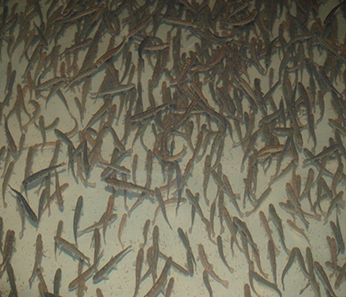Of Water Concerns And California Salmon

Interesting take in Water Deeply on how water allocations will affect both the Bay Areas and the salmon that rely on Central Valley/Delta water to spawn upstream.
The Bay Area's limited water supply may not be enough to support both economic growth and salmon populations, writes @allybland. @TuolumneRiver @TroutUnlimited #CAwater #CAdrought https://t.co/QHpn8bKoBs
— Water Deeply (@WaterDeeply) July 31, 2018
From Water Deeply:
The Tuolumne River is a major tributary of the San Joaquin River, which feeds into the Bay-Delta, the linchpin for California’s statewide water delivery system. It’s also the place from which the San Francisco Public Utilities Commission draws the majority of its water to serve 2.7 million people in San Francisco, Alameda, San Mateo and Santa Clara counties.
As recently as the 1940s, more than 100,000 fall-run Chinook salmon spawned annually in the Tuolumne. In 2015, a little more than 100 of the fish swam up the river. Today, the river, studded with several dams and heavily diverted for human use, is considered by many to be in critical condition, and scientists and river advocates say what the Tuolumne and its native fishes need more than anything else is increased flows of water.
“Water is just one component of habitat, but it’s a very important one,” said Rene Henery, a biologist with the conservation group Trout Unlimited.
The state of California has announced a plan to increase water flow to the Tuolumne and two other rivers with the hope that the extra water will help salmon migration. But local government in the Bay Area questions whether there will be enough water to go around. More from Water Deeply:
Nicole Sandkulla, chief executive and general manager of the Bay Area Water Supply and Conservation Agency, which represents SFPUC’s wholesale customers in Alameda, San Mateo and Santa Clara counties, said her agency’s customers reduced their water use by 27 percent on average during the last drought. The new flow regime would require permanent use reductions of 25 percent or more beyond current consumption rates. That, she said, could threaten the region’s urban economy. While water agencies would likely impose as much of the rationing as possible on residents, businesses – like restaurants and breweries – might face hardships, too.
“We strongly support the objectives of the Bay-Delta Plan, but it’s our responsibility to raise the question of how this will impact the core of the Bay Area,” she said.
It’s a lengthy but pretty interesting read.



